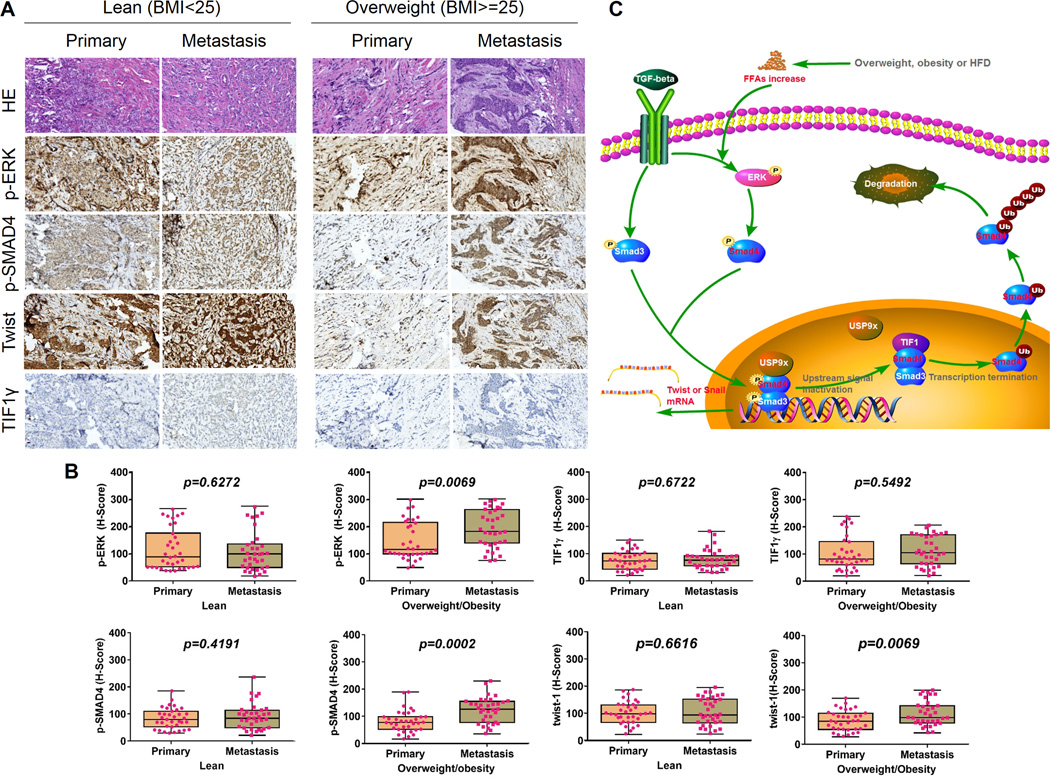Figure 7.
Phospho-ERK and –SMAD4 expression show significant correlation with overweight/obesity-related metastasis in human breast cancer. A, The expression of phospho-ERK, phospho-SMAD4 and TIF1γ in representative cases of primary breast tumors and matched lymph node metastasis tissue specimens from 35 lean (BMI 18.5–24.9) and 35 overweight (BMI 25.0–29.9) or obese (BMI>=30.0) patients. Original magnification, ×200. B, Staining was analyzed by using a system based on the percentage of positively stained cells and the staining intensity. Integrated optical density of all the positive staining in each image was determined, and its ratio to total area of each photograph was calculated as density. C, The identified signaling pathway in this study indicating that FFA promotes metastasis via the TGF-β1 pathway. TGF-β transiently activates the ERK and subsequently marks SMAD4 for activation via Thr277 phosphorylation, which facilitates SMAD4-USP9x interaction, SMAD4 nuclear retention, SMAD3-SMAD4 complex, and stimulates TGF-β/SMAD3–mediated transcriptional activity of Twist and Snail. USP9x competitively inhibited TIF1γ from binding and monoubiquitinating SMAD4. In the presence of high FFA, FFA further facilitates the described pathway by sustaining TGF-β-induced ERK activation, SMAD4 phosphorylation, SMAD4 nuclear retention and SMAD3/SMAD4 formation, thus over-activating this system and promoting TGF-β–dependent cancer progression.

